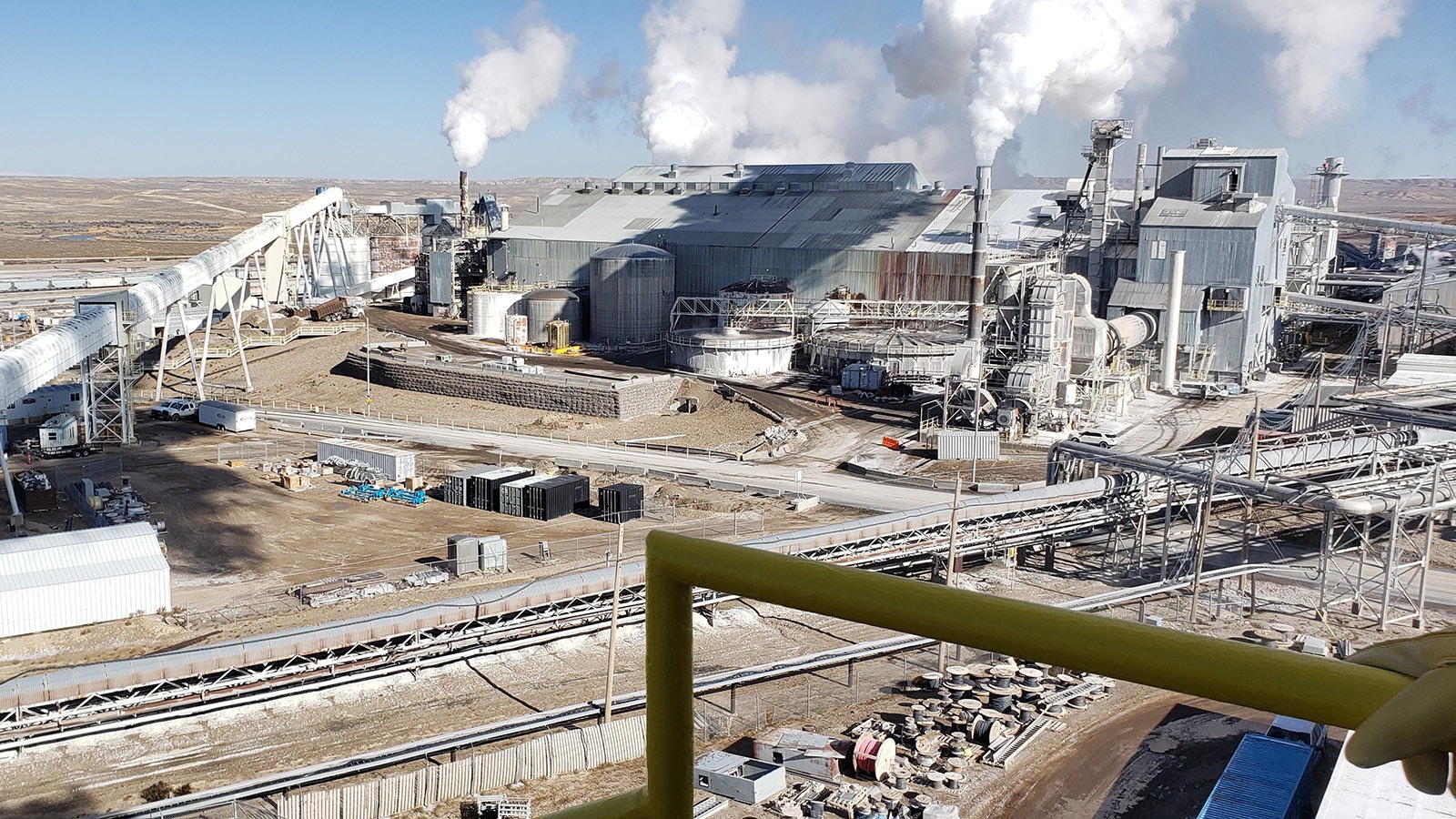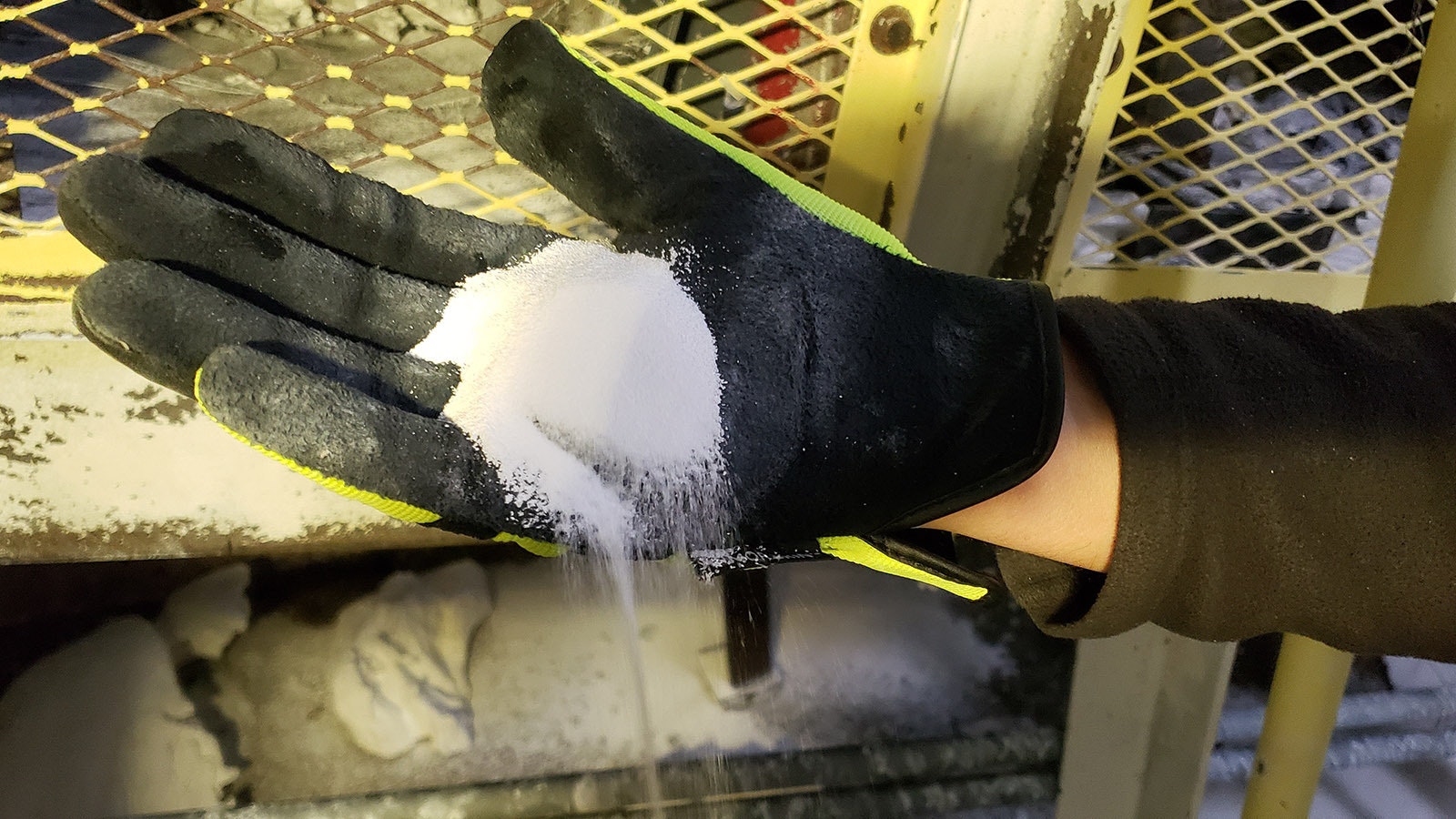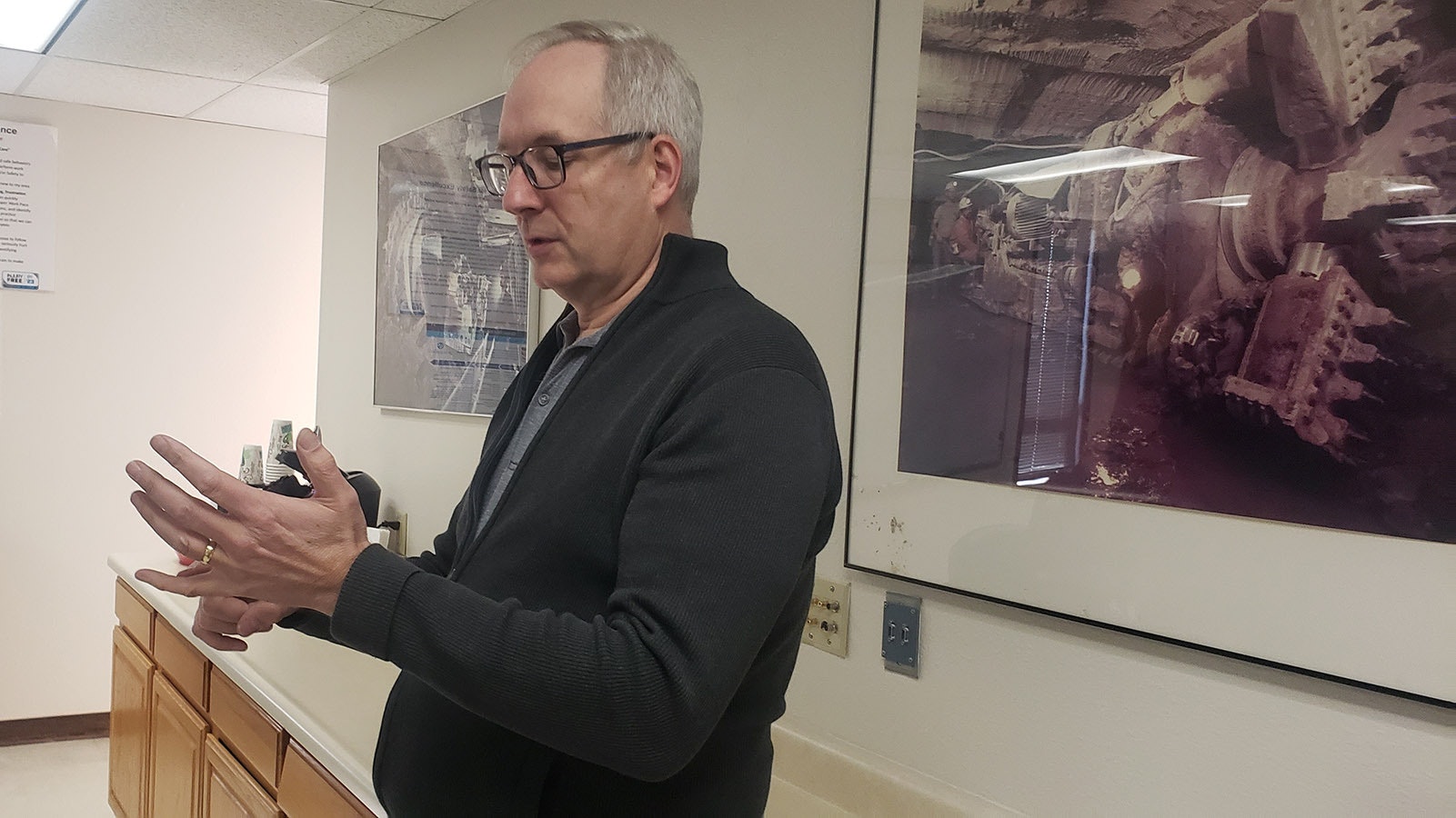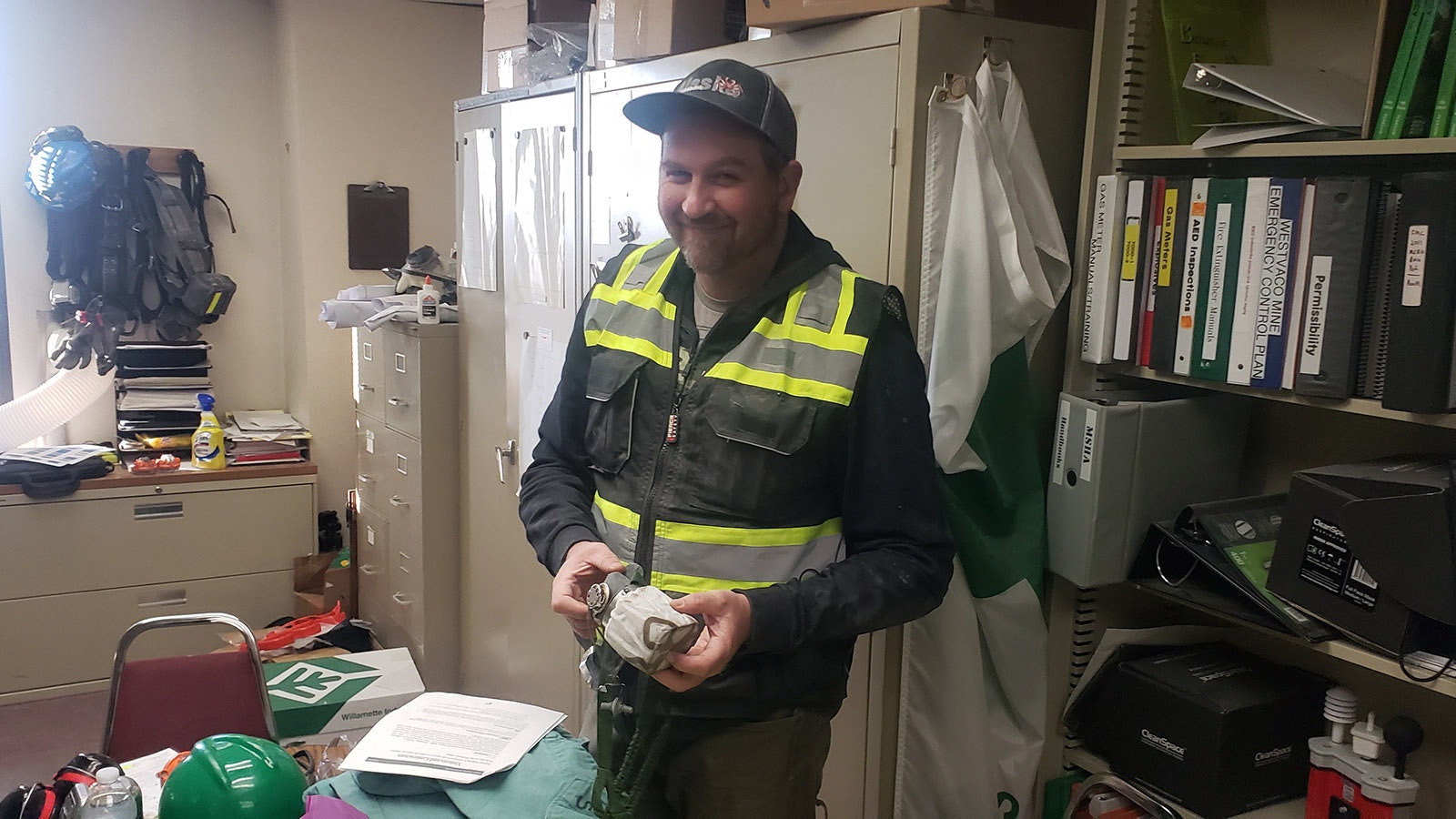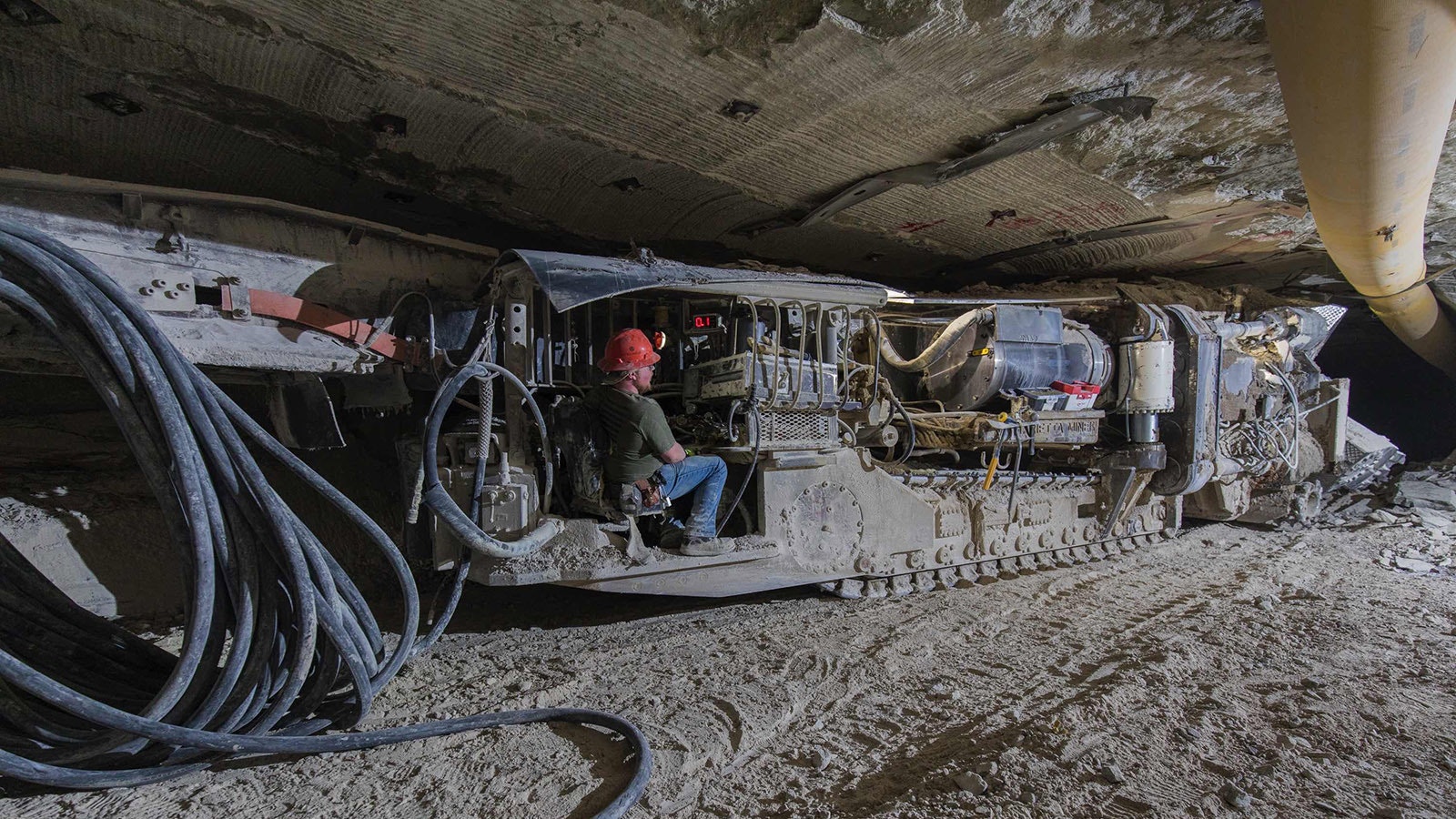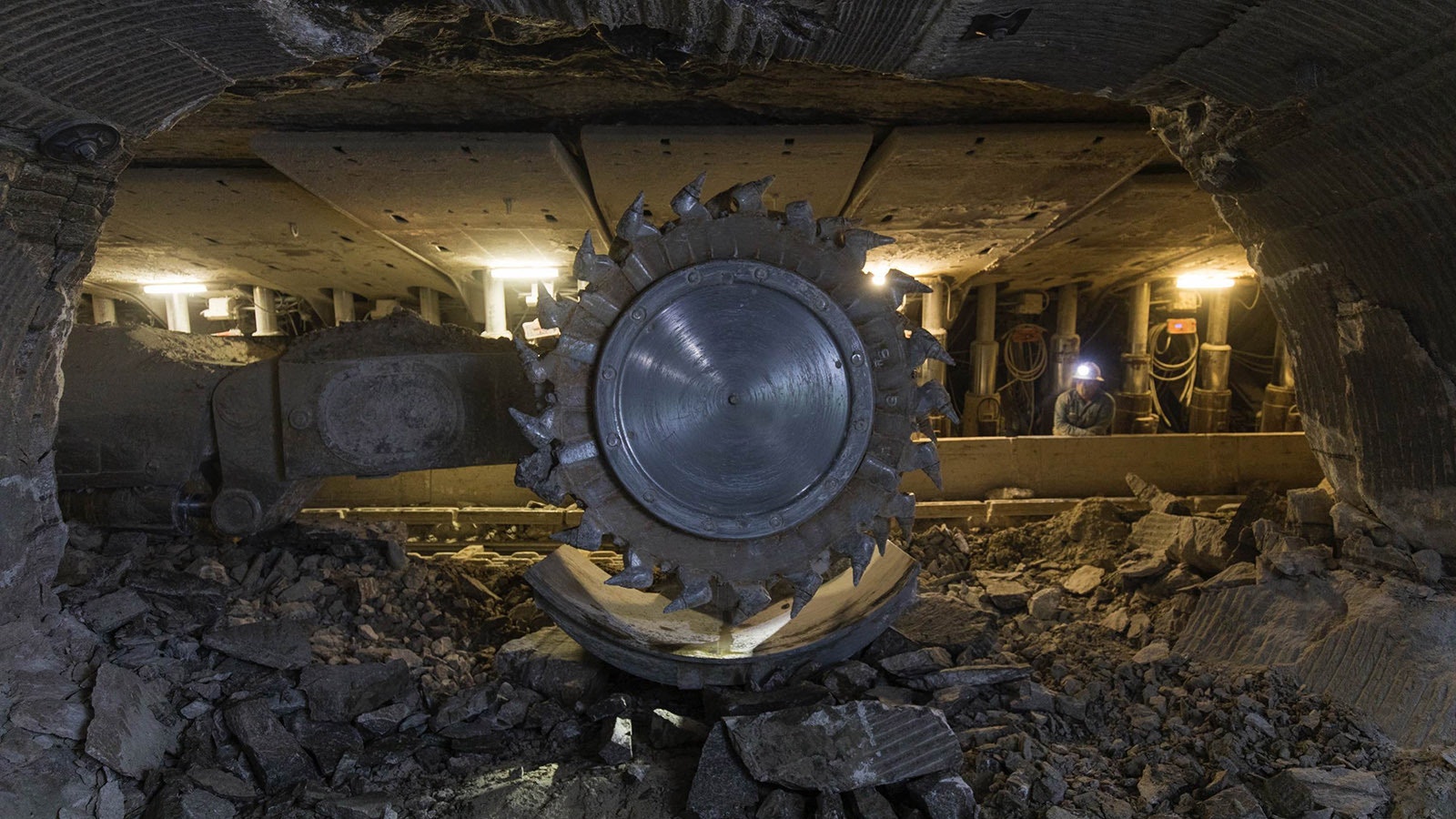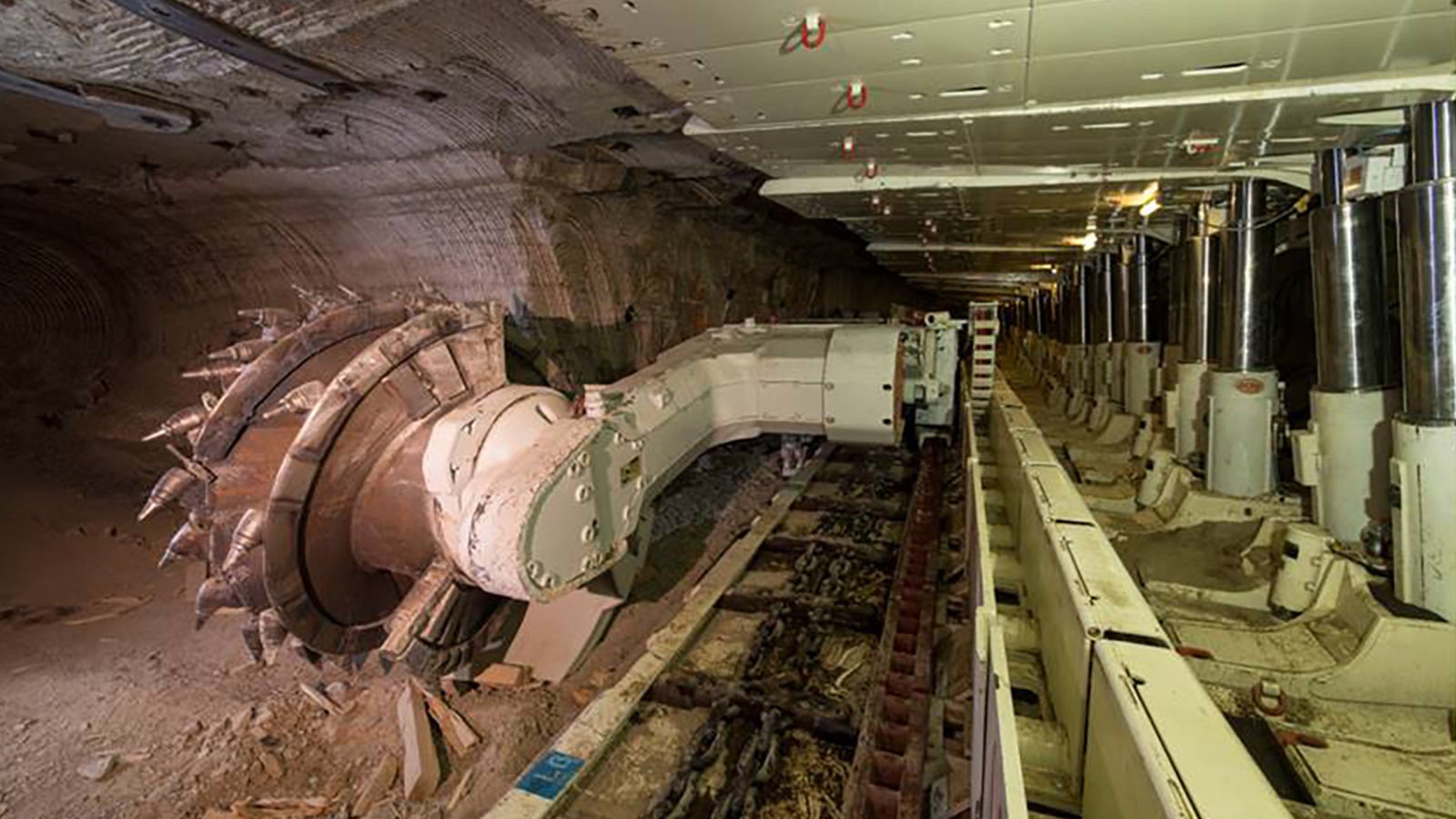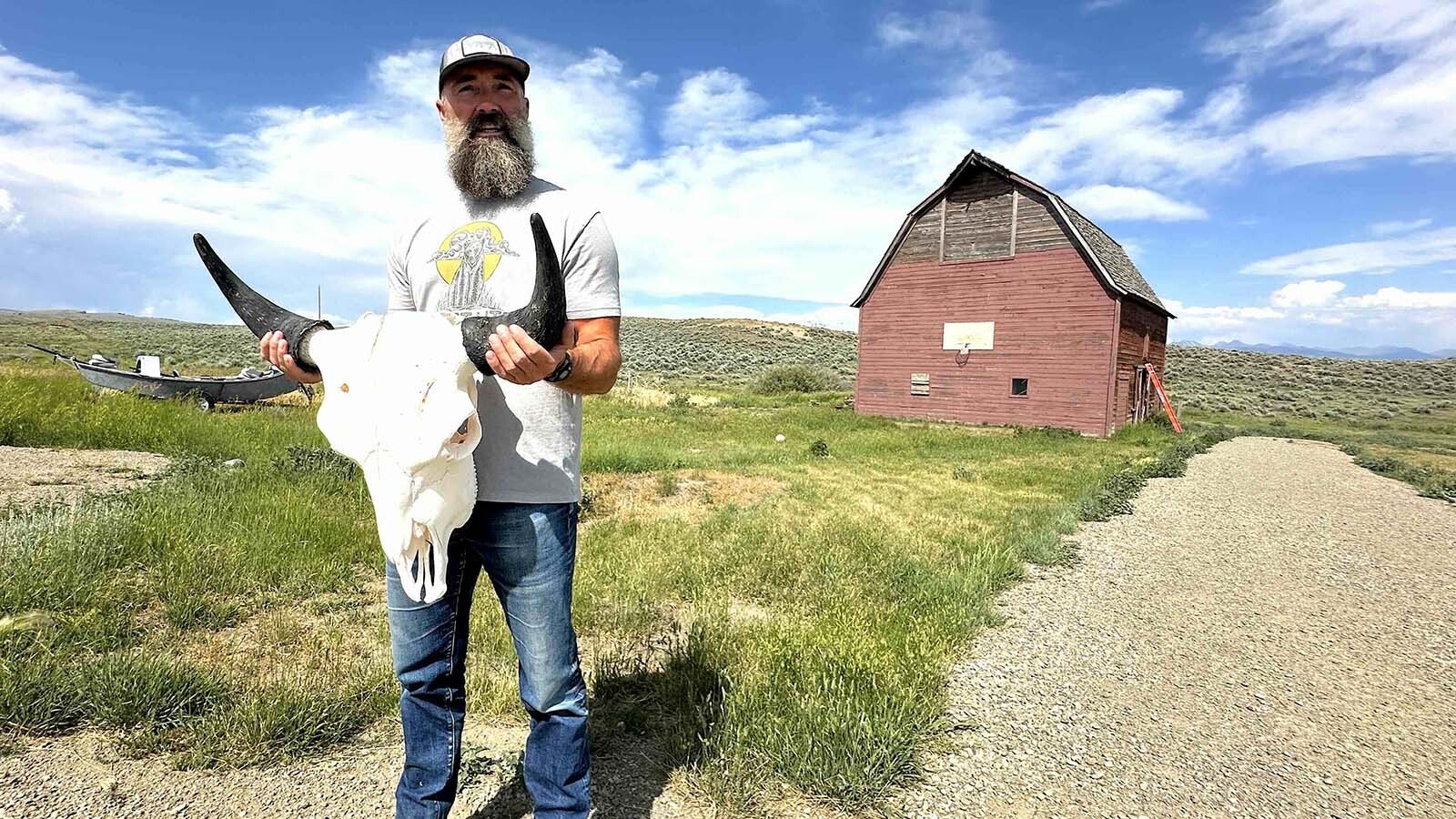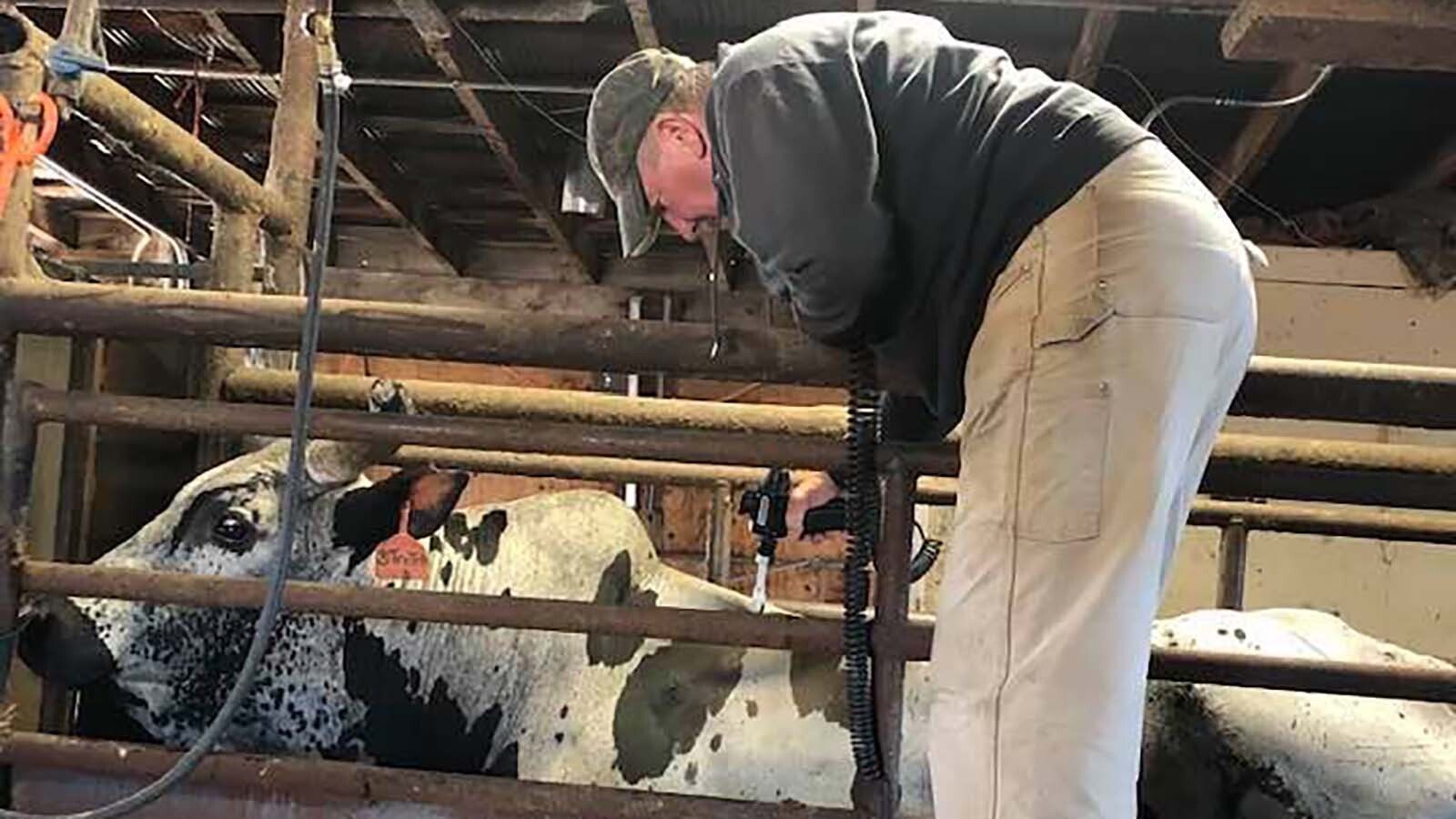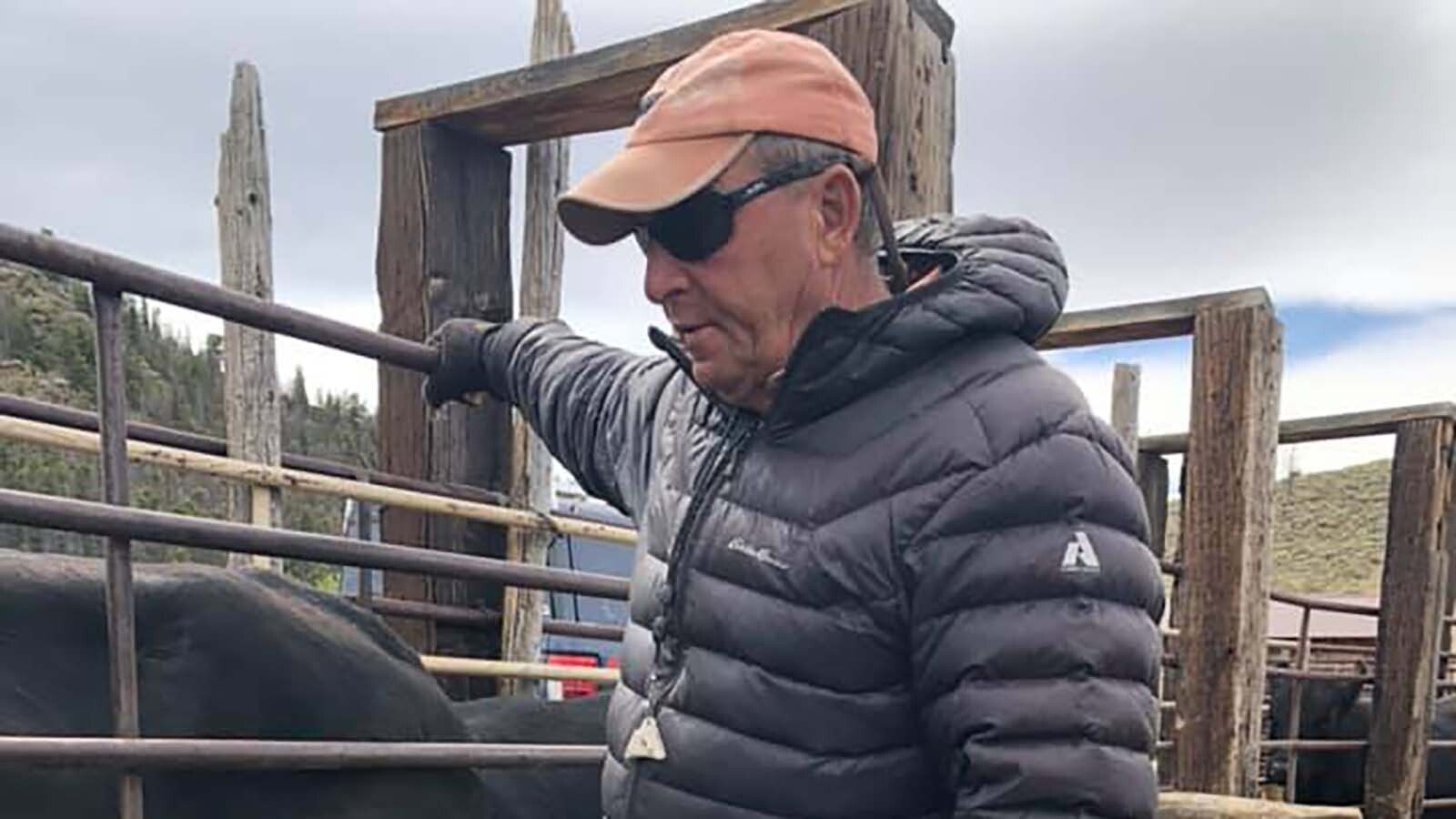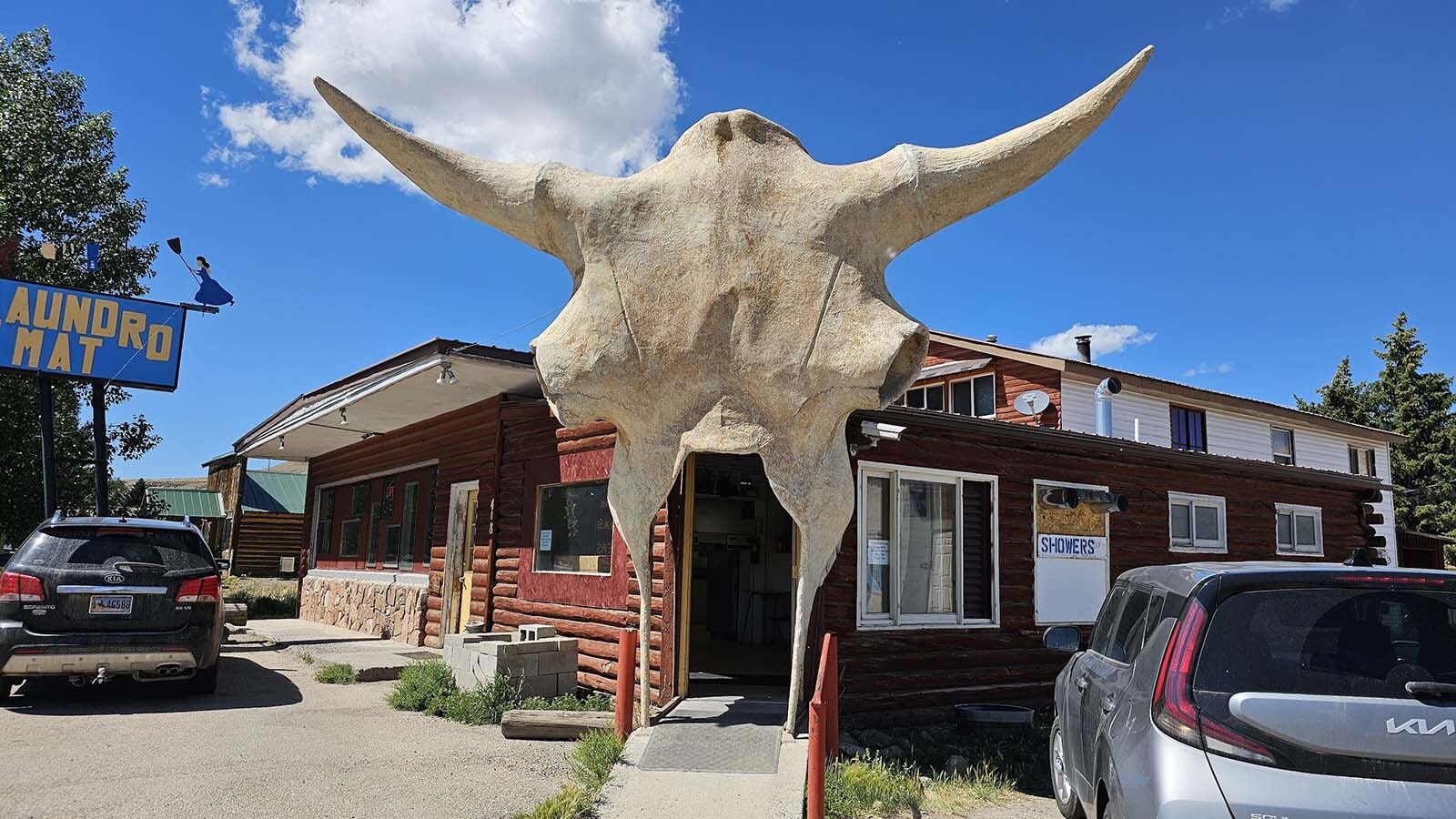GRANGER — Baking soda is a product we take for granted in kitchens from Tennessee to Texas and California to Colorado, but every single box of the pure white stuff likely has a direct connection back to the Cowboy State.
That’s because baking soda in the United States likely started its life 1,600 feet below the surface of Sweetwater County, where the largest known deposit of trona in the entire world happens to have lived for the last 50 million or so years.
Trona is the common name for a chemical called sodium carbonate, which produces soda ash.
Soda ash, in turn, is used to produce not only the baking soda that’s so common in kitchen households across the United States, but a whole host of other products as well — glass, soaps and detergents, water purifiers, insulation, flue gas desulfurization equipment, paper and more.
Wyoming has four companies tapping the massive deposit of trona in Sweetwater County, which supplies 90 percent of the soda ash used in America. Wyoming has enough trona reserves to last more than 2,000 years — longer still if technology finds a way to make deeper areas of the trona deposit economical to mine.
Wyoming mines produced 17.4 million tons of trona in 2018, which employed well over 2,225 people, according to the Wyoming Mining Association’s latest figures. The tax revenues on that in royalties are substantial as well.
Cowboy State Daily visited the Genesis Alkali plant to learn more about the underground world of Wyoming trona, and how it makes its way out into the world at large.
San Francisco Underground
Camaraderie is what Matt Manzanares, health and safety officer for Genesis Alkali, likes the best about his job working in the company’s trona mine 1,600 feet below the surface of the earth. Getting to the mine requires a ride down one of three huge steel cages that serve as an elevator shaft, taking both men and equipment to a world that few people get to see.
A trona mine is a little bit like a city, Manzanares told Cowboy State Daily just before the ride down the elevator. A city that’s nearly the size of San Francisco.
“There’s more roadways in here than there is in the whole city area of San Francisco,” he said. “It’s 2,500 miles of roadway. If we were to drive all the way to Seven Shaft, it would be about a 35-minute drive.”
Underground, the mine has everything a mining city might need. After all, no one has time for repeated trips back to the surface of the earth for a little bit of this and a little bit of that.
So, there’s a big mechanic shop with parts and computers, as well as warehouse areas to store the stuff the miners need down below. There are lunch tables as well, and there are diesel jeeps to travel the miles and miles of roads. Diesel is the preferred fuel of choice for a mine where methane can often be an issue. That fuel is much less likely to spark and cause an explosion.
Because of the methane, all the people going down to the mine wear methane detectors. Those have yet to actually go off, thanks to a ventilation system that’s constantly bringing in fresh air and sweeping stale air out. That system also keeps a steady breeze blowing in the tunnel, which helps keep trona dust to a minimum.
There are also bathrooms in this underground city - incinerator bathrooms that burn human wastes to ash. From the ceiling, strange white and grey icicles are slowing forming. They are salty and fragile, and full of water. That makes them apt to melt away as soon as they’re brought to the surface.
The streets in this underground city are not wide at all. They’re small tunnels, which let only one vehicle at a time pass. No six-lane interstates down here, sorry San Francisco.
All of the various tunnels are marked with a numbering system spray-painted on the wall. That way workers can identify locations they need to get to, or tell others where they are. And, while there are lights, they are quite dim. All of the underground diesel jeeps have their tops cut off, like some kind of cool convertible, likely due to low overhead ceilings. They also run with their lights on in the perpetual twilight.
At each intersection, the driver turns the lights off to see if anyone’s coming, then back on. Horns are often honking as well, an audible signal that says, “Hey, I’m here, passing through.”
If two drivers meet each other coming the opposite way, the vehicle headed toward work yields to vehicles headed out of the mine toward home. Unless the oncoming vehicle is really large and loaded. In that case, all bets are off. The smaller vehicle yields the right of way. It’s just the courteous thing to do where turning a large vehicle is problematic in skinny narrow tunnels.
“We’re basically human ants down here,” Manzanares said. “We make little tunnels. We build areas to store stuff, and we’re just basically intelligent ants.”
Tinker Toys On Steroids
Trona used to be mined using a room and pillar method that was about 50 percent efficient. Applying techniques adapted from the coal industry, however, today’s trona mines use what’s called the long-wall method and captures 70 percent of the resource.
The long wall looks like a bit like a giant metal caterpillar, although workers are more likely to refer to it as a snake. It winds 750 feet underground along a wall that’s set to be mined. Its pieces can be taken apart like tinker toys and then put back together in a new mining area, when the old one has been exhausted.
Large pontoons, or toe shields as some call them, float up above the surface of the mine and offer a safe walking path. They also look a bit like caterpillar legs sticking out.
The head of the caterpillar has a huge drill covered with carbide bits. It will turn around and around like a giant insect that’s eating the grayish rock on the walls. Jets of water spray the whirling head the entire time it’s working. That helps keep the irritating trona dust down in the mine.
The wet rocks tumble down onto a conveyor belt that will slowly but steadily take the unprocessed trona rock 12 miles away, to the place where it can begin its transformation to soda ash.
Workers wear ear muffs to dull the grinding sound of the trona caterpillar, but it can still be heard in spite of that. That way, though, people can still talk to each other despite all the noise.
Talking below ground involves a whole new convention. Where people above ground are used to making eye contact, below ground, where miners are all wearing headlamps with lights turned on, they all take care to look at each other sideways, to avoid spotlighting each other in the eye.
The friendliness below ground is quickly apparent, though, despite all the sidelong glancing. Everyone says hello and waves. People ask how you’re doing. This may be an underground city the size of San Francisco, but it feels more like small town America.
The Kind Of Lake No One Wants To Vacation On
Trona has several different forms which have been given fanciful names like root beer, maple sugar, and spar, depending on their visual appearance.
Wyoming’s trona deposit was formed 50 million or so years ago by a giant lake that once covered all of Southwest Wyoming.
“It was bounded on the east by Rock Springs uplift,” Alkali Genesis Director of Mining Rich Kramer told Cowboy State Daily. “On the north, by the Wind River Range, South by the Uintas, and on the west by the Wyoming range.”
In size, the lake was probably like the Great Salt Lake, except the Great Salt Lake is a chloride-rich sodium, while the trona lake was a carbon-rich sodium instead.
“It probably wasn’t a fabulous lake to vacation in,” Kramer said. “The beach life was probably not that great, but it was just this big alkali lake.”
Over time, as the water evaporated out, the sodium carbonates would fall out of the water, precipitating down to the bottom of the lakebed.
“There are debates about how fast or slow that occurred geologically, whether it happened within a few thousand years or took a long, long time,” Kramer said. “But in any case, the beds were deposited, and now there’s quite a series of them.”
Twenty-five beds in fact, which in total go 3,000 feet below the surface of the earth. Genesis Alkali and its competitors Solvay (French and Belgian) and Tata (Indian) are mining from bed 17.
Genesis Alkali’s recent expansion at the Granger Facility is using beds 19 and 20, which are closer to the surface, while competitor Sisecam (Turkey) is using beds 24 and 25, which are the shallowest of all.
Wildcat Wonder
The trona deposit was discovered in the late 30s by a company that was drilling for oil and gas.
“They drilled a wildcat oil well and they didn’t have any idea what the geology was in the basin,” Kramer said. “When they got down into the trona beds, they were coring that and they said, ‘Well it’s not oil, it’s not gas, so it’s not that interesting to us, but these rocks look different.”
So, they sent samples of the cores off to the USGS in Denver. Trona wasn’t completely unknown at the time, but a site with so much of it in one place was unique and interesting.
The oil well turned out to be a dry hole, but it didn’t take long for a company to decide it was worth sinking a mining shaft in 1948, even though they didn’t yet have a commercial market.
“They figured we’ll figure out how to make this stuff, and somebody’s gonna buy it,” Kramer said. “If you build it, they will come, right? So, they started in ‘48 and it takes a lot of time to get this stuff done, but by 1953 they were commercially viable.”
At the same time that they were developing the new technology and process, they licensed their patents out to competitors to create an actual industry.
Wyoming’s trona industry is 75 years old this year, and Geneis Alkali employees all have things like T-shirts and hats to commemorate the occasion.
“We actually were kind of the birth of the industry,” Kramer said. “By helping these other companies get started and create more of a demand and supply for Wyoming, and so that’s worked out very well. All of these companies are strong and successful as a result of that work from the 50s and 60s.”
Today trona continues to be a growing market around the globe, and Wyoming is a big part of that. Natural trona even has a few advantages in a low-carbon world, Kramer added, that are helping position it to grow even more.
“We can provide a product that has a smaller footprint carbon-wise than a synthetic competitor,” he said. “Even when transporting it.”
The industry is also highly diversified thanks to all the different products it’s used in, so it has been somewhat insulated from economic downturns. Meanwhile, new markets are being discovered all the time — such as solar panels and batteries for electric vehicles.
“That’s a growing market,” Genesis Alkali Communications Specialist Dave Caplan told Cowboy State Daily. “You need two tons of soda ash to extract a chemical needed to make the lithium batteries. So, we sell to the, essentially to the lithium producers, and then they use our soda ash to get through a chemical process to make ingredients for the electric batteries.”
It’s just another way that Wyoming’s trona mine has found its way into every facet of modern American life, starting with that baking soda in all of our kitchens.
Renée Jean can be reached at renee@cowboystatedaily.com.

